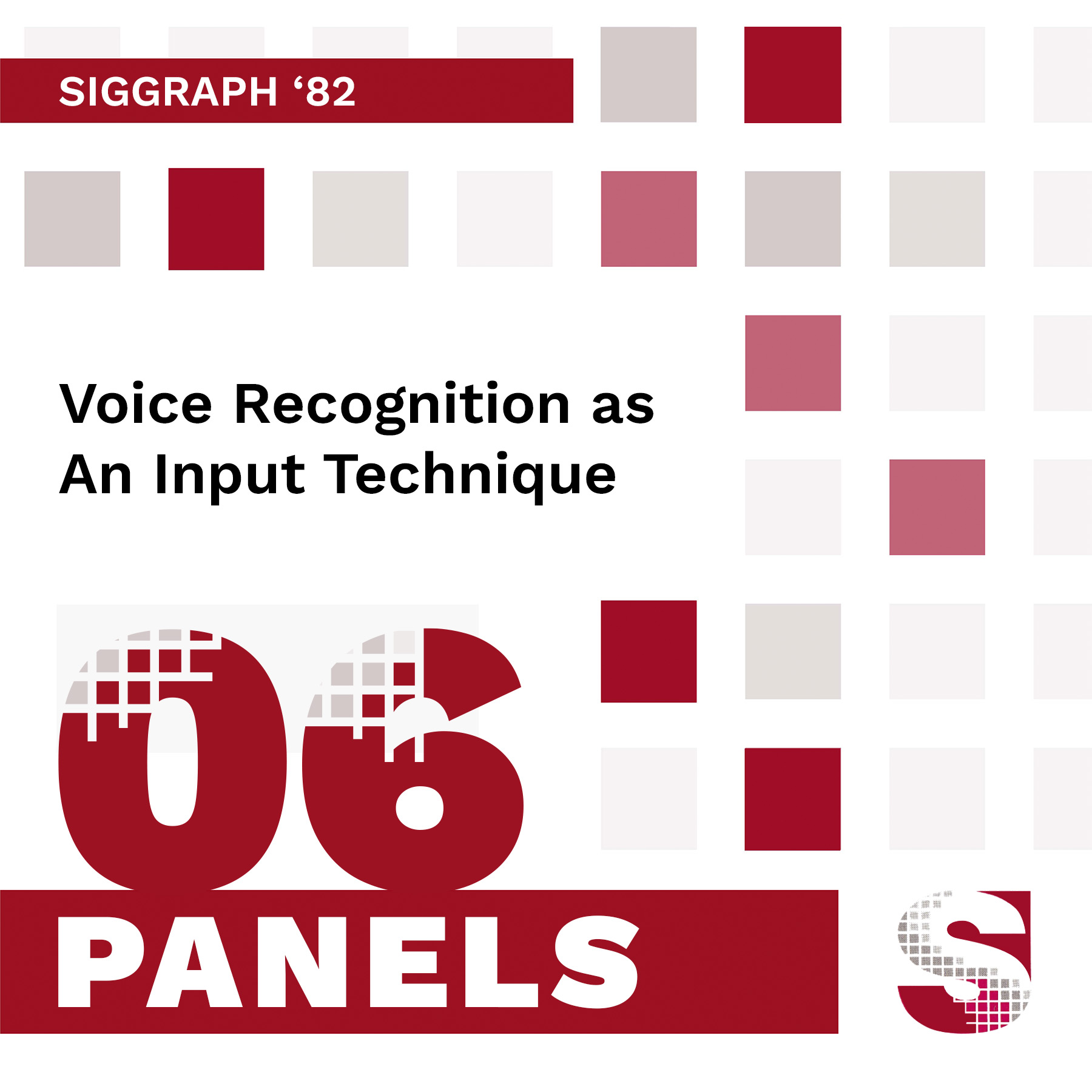“Voice Recognition as An Input Technique” Moderated by
Conference:
Type(s):
Title:
- Voice Recognition as An Input Technique
Presenter(s)/Author(s):
Entry Number: 06
Abstract:
Richard Rabin Interactive graphics systems typically require intense ?hands busy/eyes busy and brains busy? activity on the part of the system user/operator. Voice input by means of automatic speech recognition equipment, offers major potential for improving user/operator productivity. It is the only input technique which does not require the direct use of hands and eyes. Voice input can replace or complement keyboards, function keys, tablets and other types of input devices typically employed for entering commands, alpha and numeric data. Alan R. Strass Effective human interfaces are an essential element of plant information systems and computer integrated processes, such as graphics. In the past, data gathering choices in the factory have been generally dominated by clipboards and travelling punched card decks. Similarly, complicated keystroke sequences have often been required to evoke appropriate computer controlled functionality. Today, a number of advanced human interface techniques can be used to improve both source data capture and the selection of appropriate computer controlled operations. These techniques are becoming an integral part of many emerging on-line/real-time engineering and manufacturing applications. Speech recognition, in particular, is emerging as an important interface technology. Speech input can reduce the amount of attention the user has to spend on the mechanics of recording information of selecting functions and allows users to concentrate on their primary task. Some of the benefits include: (1) reduced user training time, (2) increased worker productivity, (3) reduced secondary key input, and (4) improved timeliness and accuracy of information made available via voice. Currently available speech recognition products have already been used to demonstrate these benefits. These advantages will only increase as the next generation of speech products deliver improved recognition performance. Mark Robillard There is an increasing awareness of the potential for improving operator productivity for graphic systems by the use of voice input. We have analyzed a number of applications in conjunction with potential users to determine how best to use this capability. Initial conclusions are that voice input can be effective, providing that the capabilities of the speech recognition equipment utilized to input voices are matched to the requirements of the applications. Key factors to be considered are vocabulary size and types, and the use of isolated words versus continuous speech utterances. Sue Schedler The addition of voice input to Calma’s GBSll System provides users with a fast, accurate means by which they can execute commands. A customized Interstate Electronic VRM System has been integrated into the hardware configuration of all microelectronics products, Chips, Sticks and CARDSII. System software recognizes the input from the Harmony VRM in the same manner as a keyboard or menu button input. All three input methods may be used separately or in conjunction with each other. All command inputs are buffered, so the user need never wait for a command to complete before entering the next. A voice file contains up to 50 words, and any number of files may be uploaded or downloaded by one user. Both standard system commands or GPLII Programs can be executed by voice. On-line design productivity by menu input can be increased by 50% when the operator uses voice. Operator training is unaffected by the addition of voice to the system. Voice is trained as a separate module in the class. Its greatest impact appears once the users know operation syntax and can communicate commands quickly. Calma provides standard voice menu to be used by customers or the customer may modify the file as needed. Most commonly used commands are put into the voice file leaving less frequently used commands for the onscreen menu. By implementing the combination of voice and menu, we can completely eliminate the need for keyboard input. Operators initially are skeptical of the ?bell and whistle? feature, but find after using voice input that they do not feel uncomfortable ?talking? to the computer, and find it an enjoyable and productive tool. Matthew Peterson The use of voice recognition in a ?mature? graphics application raises a number of issues that must be faced. ?Mature? refers specifically to the maturity of the user interface in the graphics application. Commercial CAD/CAM systems provide such an application: they have been evolving for over ten years, they possess robust user interface features, and their features are subject to the test of the marketplace. Use of voice recognition in such applications raises a number of challenges to the technology: (1) How does it compare to existing features (e.g., tablet menuing) for servicing typical user interface needs? (2) Are there atypical or emerging needs for which it is particularly suitable? (3) How attractive is its price/productivity offering compared to alternative user investment strategies for increasing productivity? (4) In what directions should it be driven to better service the needs of commercial graphics applications? Material on present and future industry needs, other user interface features, and industry price trends will be presented to help assess these issues.





